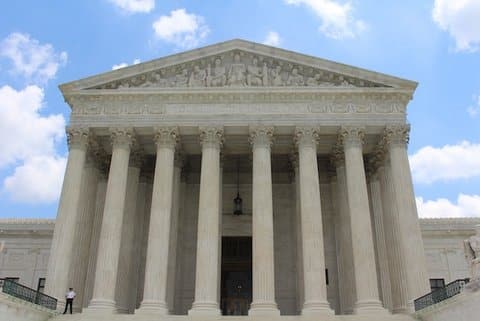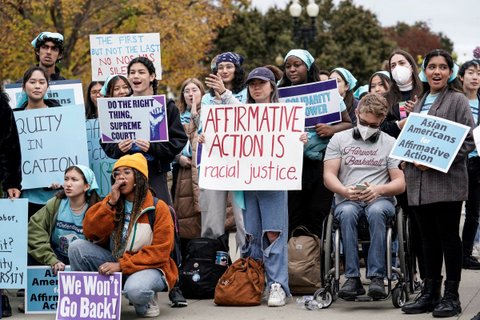
29 Jun EdSource: Supreme Court Rules Against Affirmative Action in College Admission

The Supreme Court ruled 6-2 and 6-3 Thursday against race-conscious admissions policies at Harvard and UNC, respectively.(Photo by Claire Anderson on Unsplash)
By Michael Burke, EdSource | via Bay City News
The U.S. Supreme Court on Thursday struck down affirmative action policies at colleges, ruling that race-conscious admissions policies at Harvard University and the University of North Carolina are unlawful.
“The student must be treated based on his or her experiences as an individual — not on the basis of race,” Chief Justice John Roberts wrote in the majority opinion. “Many universities have for too long done just the opposite. And in doing so, they have concluded, wrongly, that the touchstone of an individual’s identity is not challenges bested, skills built, or lessons learned but the color of their skin.”
The court’s vote was 6-3 in the North Carolina case, with the conservative majority ruling against the programs. The vote was 6-2 in the Harvard case, from which Justice Ketanji Jackson Brown recused herself as a former member of Harvard’s board of overseers.
The court’s decision will force colleges across the country to change their admission policies, including some private universities in California that have considered race as a factor. Public universities in California are already banned from doing so because of a 1996 ballot measure approved by voters that banned public colleges from considering an applicant’s race.
University of California officials previously warned the court that, without affirmative action, its nine undergraduate campuses have been unable to enroll a student body that is sufficiently racially diverse.
In a dissenting opinion, Justice Sonia Sotomayor wrote that the court’s decision would have a “devastating impact” on higher education. “The majority’s vision of race neutrality will entrench racial segregation in higher education because racial inequality will persist so long as it is ignored,” she wrote.
In her dissent, Sotomayor also invoked the University of California, noting that there was a decline in freshman enrollees immediately after the 1996 ballot measure, especially at the system’s most selective campuses, like Berkeley.
In the North Carolina case, the group Students for Fair Admission argued that the university admissions policies gave preference to Black, Latino and Native American students and discriminated against white and Asian applicants. In the Harvard case, the university was also accused of discriminating against Asian American students.
Copyright © 2023 Bay City News, Inc. All rights reserved. Republication, rebroadcast or redistribution without the express written consent of Bay City News, Inc. is prohibited. Bay City News is a 24/7 news service covering the greater Bay Area.
What a Supreme Court Overturn of Affirmative Action at Two Universities Could Mean





No Comments